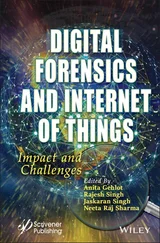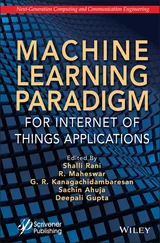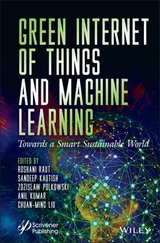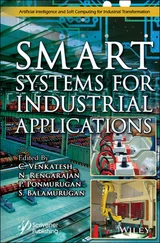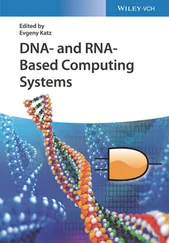14 9 Evolving Trends of Artificial Intelligence and Robotics in Smart City Applications: Crafting Humane Built Environment 9.1 Fundamentals of Smart Cities 9.2 Case Study Analysis 9.3 Smart Buildings in Smart Cities: Humane Approach 9.4 Future Scope and Impact on Society 9.5 Conclusion References
15 10 T-Secure IoT in Smart Home System 10.1 Introduction 10.2 Literature 10.3 Method 10.4 Chematic Implementation 10.5 Simulation and Result 10.6 Conclusion References
16 11 Intelligent Micro-Mobility E-Scooter: Revolutionizing Urban Transport 11.1 Introduction 11.2 Intelligent Transport System 11.3 Technologies Used in Intelligent Transport Systems 11.4 Micro Mobility 11.5 Case Study 11.6 Methodology: Value – Steam Mapping the Existing Operations 11.7 Operational Challenges Faced by Arnab Micro Mobility 11.8 Conclusion References
17 12 Automatic Booking of LPG and Leakage Detection System Using IoT 12.1 “What is IoT?” 12.2 Why IoT Matters 12.3 The oneM2M IoT Standardized Architecture 12.4 The IoT World Forum (IoTWF) Standardized Architecture 12.5 A Simplified IoT Architecture 12.6 Case Study: Automatic LPG Booking and Leakage Detection System using IoT 12.7 Conclusion References
18 Index
19 End User License Agreement
1 Chapter 5Table 5.1 Difference between cyber physical system and Internet of Things.
2 Chapter 6Table 6.1 Trust calculation.
3 Chapter 7Table 7.1 Characteristics of chosen database.Table 7.2 Values obtained after computation of distances on basis of containers.Table 7.3 Values used for comparisons on basis of containers.Table 7.4 Values obtained for execution time.Table 7.5 Obtained from different inertia criterion to measure quality of data d...
4 Chapter 8Table 8.1 Main features of IIoT architecture.
5 Chapter 11Table 11.1 Various types of micro-mobility vehicles.Table 11.2 Inspection report for effective operation.
1 Chapter 1 Figure 1.1 IoT. Figure 1.2 Growth of Internet of Things. Figure 1.3 IoT applications. Figure 1.4 Smart home. Figure 1.5 Smart city. Figure 1.6 Smart grid. Figure 1.7 Wearables. Figure 1.8 Connected car. Figure 1.9 Digital health. Figure 1.10 Smart farming. Figure 1.11 IoT application areas in 2020. Figure 1.12 Security challenges of IoT.
2 Chapter 2 Figure 2.1 Simplified blockchain. Figure 2.2 Blockchain. Figure 2.3 Ecosystem of blockchain [18]. Figure 2.4 Blockchain privacy [1]. Figure 2.5 Limitations of blockchain.
3 Chapter 3 Figure 3.1 IoT sensors over business objectives. Figure 3.2 Encryption and decryption process. Figure 3.3 Symmetric encryption. Figure 3.4 Asymmetric encryption.
4 Chapter 4 Figure 4.1 Essential elements of IoT systems. Figure 4.2 Internet of Medical Things (IoMT) architecture. Figure 4.3 Wearable devices used in healthcare. Figure 4.4 IoT architecture (three layer, five layer).Figure 4.5 Fog based IoT architecture [6].Figure 4.6 Requirement of security at different layers of IoT architecture.Figure 4.7 Different types of security attacks in IoT system.Figure 4.8 Various security challenges of the IoT system.
5 Chapter 5Figure 5.1 Cyber physical system.Figure 5.2 Communication channel.Figure 5.3 IOT vs CPS representation.Figure 5.4 Cyber physical system in agriculture.Figure 5.5 Cyber physical system in education.Figure 5.6 Cyber physical system in energy management.Figure 5.7 Cyber physical system in environmental monitoring.Figure 5.8 Cyber physical system in accessible systems.Figure 5.9 Cyber physical system in healthcare.Figure 5.10 Cyber physical system in manufacturing.Figure 5.11 Cyber physical system in physical security.Figure 5.12 Cyber physical system in smart buildings.Figure 5.13 Cyber physical system in transportation
6 Chapter 6Figure 6.1 Way of trust calculation.Figure 6.2 Nodes connection in networks.Figure 6.3 Observation record.Figure 6.4 Indirect trust.Figure 6.5 Trust between nodes.
7 Chapter 7Figure 7.1 Three-level architecture of fog computing.Figure 7.2 IoT data indexing and discovery.Figure 7.3 Evaluation of index structures of different indexing structures on di...Figure 7.4 Total count of distances computed for building of binary tree.Figure 7.5 Total count of comparisons based on containers.Figure 7.6 Time required for building of binary tree on basis of containers.Figure 7.7 Comparison of different indexing structures based on count of compute...Figure 7.8 Comparison of different indexing structures based on count of compute...Figure 7.9 Presents count of comparison made by different indexing structures.Figure 7.10 Performance evaluation based on execution time of search processes.Figure 7.11 Observation on data partitioning rate obtained from different datase...
8 Chapter 8Figure 8.1 Vertical and horizontal aspects of internet of things.Figure 8.2 Relationship between IoT, IIoT, and Industry 4.0.Figure 8.3 Evolution of IIoT.Figure 8.4 Three-layer architecture of IIoT.Figure 8.5 Reference architecture platform for industry 4.0 [26, 27].Figure 8.6 IIoT basic technologies.Figure 8.7 Fourth industrial revolution.Figure 8.8 Design principles of industry 4.0 [34].
9 Chapter 9Figure 9.1 IoT applications in cities [7].Figure 9.2 Smart water supply [9].Figure 9.3 Smart infrastructure [14].Figure 9.4 Smart Dubai Agenda [16].Figure 9.5 Smart home connectivity [29].Figure 9.6 IoT in smart building applications [30].
10 Chapter 10Figure 10.1 Block diagram of Arduino.Figure 10.2 SEQ Figure \* ARABIC 1: Arduino Uno.Figure 10.3 Programming the arduino using arduino IDE.Figure 10.4 Adding the server in the app using IP address and port number in TCP...Figure 10.5 Schematic diagram.Figure 10.6 Face recognition using MATLAB.Figure 10.7 Motor (Acting as Door) connected with arduino.Figure 10.8 Flow chart.
11 Chapter 11Figure 11.1 Sources of global CO 2emission.Figure 11.2 Country-wise contribution in world’s CO 2emissions.Figure 11.3 Classification of micro mobility.Figure 11.4 Growth trend of e-scooter worldwide.Figure 11.5 Ways e-scooters help the environment [19].Figure 11.6 CO 2impact by e-scooter.Figure 11.7 Standard operating process to monitor the movement of e-scooter. PRO...Figure 11.8 Fleet management with integrated IoT technology to monitor the movem...Figure 11.9 Process flow for real-time information technology integration.Figure 11.10 Geofenced area highlighted in red.Figure 11.11 Arnab scooters parked neatly at the designated stations.Figure 11.12 Arnab being ridden safely by the rider.
12 Chapter 12Figure 12.1 Main elements of oneM2M IoT architecture [11, 12].Figure 12.2 Details of IoT reference model published by IoTWF.Figure 12.3 IoT reference model connectivity layer functions.Figure 12.4 IoT reference model layer 3 functions [15].Figure 12.5 Simplified IoT architecture.Figure 12.6 Expanded view of simplified IoT architecture.Figure 12.7 IoT based automatic LPG gas booking and leakage detection system.Figure 12.8 NodeMcu board.Figure 12.9 Load cell.Figure 12.10 HX711.Figure 12.11 MQ2 gas sensor.Figure 12.12 Sequential diagram for hardware.Figure 12.13 Sequential diagram for software.
1 Cover
2 Table of Contents
3 Title Page Scrivener Publishing 100 Cummings Center, Suite 541J Beverly, MA 01915-6106 Publishers at Scrivener Martin Scrivener ( martin@scrivenerpublishing.com ) Phillip Carmical ( pcarmical@scrivenerpublishing.com )
4 Copyright
5 Preface
6 Begin Reading
7 Index
8 End User License Agreement
1 v
2 ii
3 iii
4 iv
5 xiii
6 xiv
7 xv
8 xvi
9 xvii
10 1
11 2
12 3
13 4
14 5
15 6
16 7
17 8
18 9
19 10
20 11
21 12
22 13
23 14
24 15
Читать дальше

